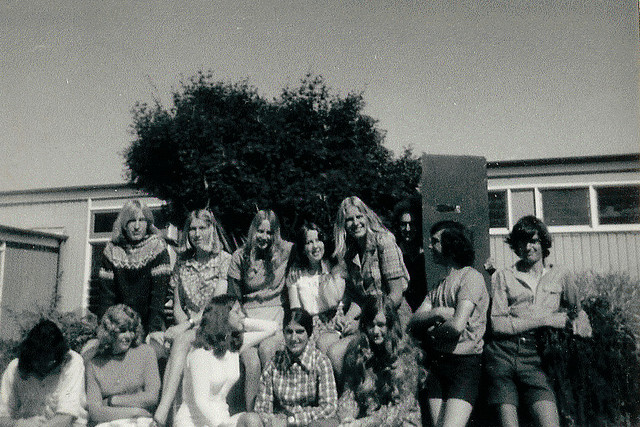1974: New Social Order: Understanding Students’ Identification with Varying Social Identities

In 1974, the global recession continues to affect not just the United States, but the rest of the world as well. Additionally, impeachment hearings for Richard Nixon ultimately lead to his resignation as President of the United States following the Watergate Scandal. This was also the first year that an African American model appeared on the cover of a fashion magazine and girls were allowed to play in Little League baseball.
It is within this context of political scandal, economic instability, and social “firsts” that a new bank of questions was introduced on the CIRP Freshman Survey that sought to examine students’ identity salience as young adults. This was the only year that this bank of questions was asked, yet its appearance in 1974 signals a growing interest in non-academic issues that affect students in college.
Specifically, the set of questions contextualized the concept of identity: “Most people identify with (feel they have a great deal in common with) a lot of different groups. But they identify more with some groups than with others.” The question then asked, “How strongly do you identify with each of the following groups?”
- People who live in my community
- People of my own religion
- People of my own sex
- People of my own race
- People of my own generation
Response options for these questions included “little or none,” “moderately,” “strongly,” and “strongest of all.”
Students identified “strongest of all” with people of their own generation (29.1%). No other identification group even came close as the group with which students identified “strongest of all” (community: 13.6%, religion: 6.7%, sex: 3.5%, race: 8.2%).
For the rest of the identification groups, the majority of students either “moderately” or “strongly” identified with each group. It is important to note, however, that gender identity was more salient for women than men. In fact, 37.2% of women indicated that they “strongly” identified with people of their own sex, compared to only 28.8% of men. Additionally, few students had strong identity ties to people of their own religion, with 34.6% of all freshmen responding that had “little or no[ne]” identification and 42.7% indicating that they only “moderately” identified with this group.
Capturing incoming students’ views as they enter college is important given what we know about how identity shapes the college experience. While the vast majority indicated that they identified most strongly with their generation, and least strongly with their religion, most of the students did identify with more than one group. This was (and continues to be) an important aspect to consider when trying to understand the impact of college on students. Beyond academic impacts, the identities that students bring to college will inevitably shape their experiences once enrolled. It would be interesting to compare the results of this question in 1974 to results of a similar question in the future. The similarities or differences between these results would characterize the students of the time in a clear and interesting manner.
Did you know…
46% of all entering freshmen agreed somewhat or strongly that if two people really like each other, it’s alright for them to have sex even if they’ve known each other for only a very short time
61.4% of all entering freshmen agreed somewhat or strongly that young people these days understand more about sex than most older people
